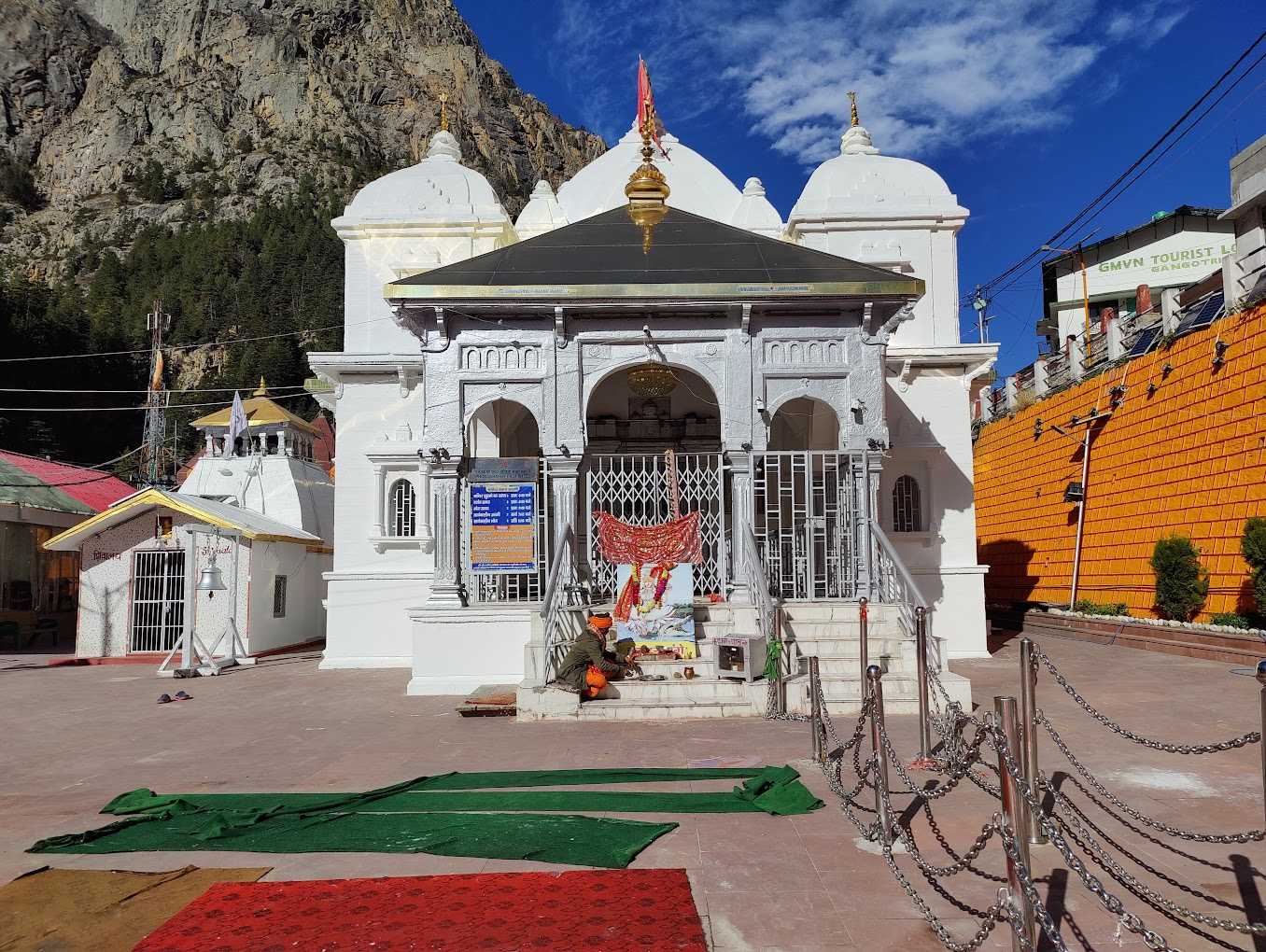
GANGOTRI TEMPLE
It is the place from where originates the Ganges, one of the most sacred rivers of the Hindus. Tucked away in the Garhwal hills, Gangotri shrine draws in lakhs of tourists from all parts of the world every year. One of the chardham destinations, Gangotri lies at an elevation of 3,048 m above sea level. Apart from devotees, the tourist spot is also visited by a good number of adventurers from around the world.
Gangotri is located at a distance of 300 km from Dehradun in the state of Uttarakhand. The ideal time to pay a visit here is between the months of April and November while the temple remains open for devotees between May and November. Summers are cool and winters are freezing cold. If you are travelling here in winter, do remember to be equipped with necessary clothings. It is advisable not to travel to Gangotri during monsoon months to avoid landslides.
History of Gangotri
The great task of bringing the Ganga on earth started. Anshuman failed and so did his son Dilip, but the grandson Bhagirath was very determined who meditated at Gangotri. After several years of intense meditation, the Ganga descended from Heaven and remained in suspense in the coils of Shiva’s hair. Now king Bhagirath meditated to propitiate Shiva. Shiva being pleased released the Ganga as three streams-one of which came of earth in the form of the Bhagirathi, The Ganga’s waters touched the ashes of the 60,000 sons and they rose to their eternal rest. The slab of stone on which King Bhagirath in believed to have meditated is called the Bhagirath Shila and is located near the temple of Ganga.
Important details and attributes of Badrinath Temple:
Gangotri is well known for its breathtaking natural beauty, which includes snow-capped peaks, verdant foliage, and immaculate mountain vistas, in addition to its religious significance.
Devotees and travelers from all over the world come to Gangotri Dham because it provides a chance to immerse oneself in the tranquil and breathtaking Himalayan environment in addition to a spiritual experience.
- Accessibility:Situated at an approximate elevation of 3,100 meters, the shrine provides stunning vistas of the surrounding scenic landscape.
- Opening and Closing Dates: As with Kedarnath Temple, pilgrims can only visit Badrinath Temple during a restricted time frame, which is typically from late April or early May until the beginning of November. Because of the high snowfall throughout the winter, it is closed.
- Pilgrimage Route: Usually, pilgrims travel by car to go to Badrinath; Joshimath is the closest large town. Travelers will enjoy breathtaking drives across the Himalayas, taking in little towns and breathtaking scenery.
- Historical Significance: It is thought that the Kedarnath Temple originated during the time of the Mahabharata. In this location, the Pandavas reportedly sought Lord Shiva's blessings following the Kurukshetra War.
- Architecture: The temple's construction is straightforward but distinctive, built with grey stone slabs in the classic Himalayan manner. It is thought to have been constructed in the eighth century by Adi Shankaracharya.
- Gaumukh: From Gangotri, it is a 16-kilometer hike to Gaumukh, the source of the holy Ganga river. The Ganga comes from the Gangotri Glacier in Gaumukh.
- Legend: Hindu mythology holds that Gangotri is the location where the Ganga river entered the world after Lord Shiva freed it from his bonds. The Ganga descend, or Ganga Avataran, is the name given to this phenomenon.
